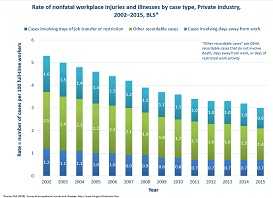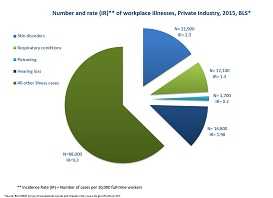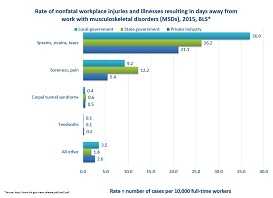Worker Health Surveillance
Estimates of Workplace Illnesses and Injuries
The Survey of Occupational Injuries and Illnesses (SOII) is designed to estimate the number of work-related injuries and illnesses and the rate at which they occur. It is the only comprehensive measure of work-related injuries and illnesses in American workplaces.
Each year, the survey collects data on non-fatal injuries and illnesses from a sample of employers from private industry and state and local governments. SOII contains two distinct outputs:
- The annual survey of Workplace Injuries and Illnesses gathers data to estimate industry-level, non-fatal work-related injuries and illnesses.
- The Cases and Demographics of Nonfatal Occupational Injuries and Illnesses involving Days Away From Work provides detailed case circumstances and worker characteristics for workers who have non-fatal work-related injuries and illnesses with one or more days away from work.
These reports form the basis of the annual estimates published in the October and November after the data are collected. According to BLS, information collected from SOII can be used to:
- Identify and correct hazards in the workplace.
- Indicate workplace safety and health conditions across industries and kinds of workers.
- Help the Occupational Safety and Health Administration (OSHA) determine where additional measures are needed to improve safety programs and to measure the effectiveness of the 1970 act in reducing work-related injuries and illnesses.
- Help labor and management design and evaluate safety programs.
- Help insurance carriers involved in workers’ compensation, industrial hygienists, manufacturers of safety equipment, researchers, and others concerned with job safety and health.
Learn more about estimates of workplace illnesses and injuries in the charts below. The data used to prepare these charts can be found by visiting the Survey of Occupational Injuries and Illnesses industry injury rates and counts and case and demographics.
- Page last reviewed: March 30, 2017
- Page last updated: March 30, 2017
- Content source:
- National Institute for Occupational Safety and Health, Division of Surveillance, Hazard Evaluations, and Field Studies (DSHEFS)



 ShareCompartir
ShareCompartir



